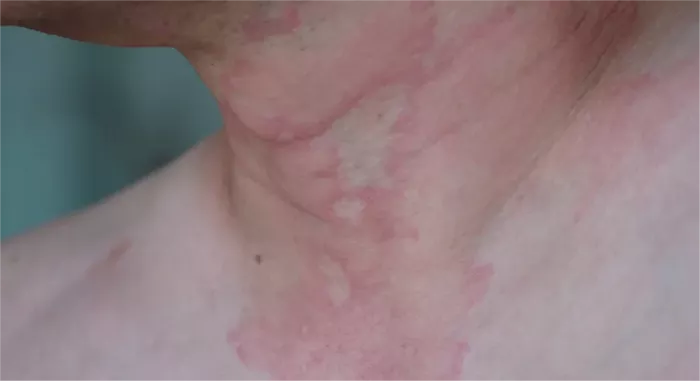Aquagenic urticaria is a rare and fascinating condition characterized by hives or welts that appear on the skin shortly after it comes into contact with water, regardless of its temperature. This unusual allergic reaction to water is not well understood, and researchers continue to investigate its causes and potential treatments. For individuals living with this condition, daily activities such as bathing, swimming, or even sweating can trigger uncomfortable and sometimes severe symptoms. In this article, we delve into the current understanding of aquagenic urticaria, exploring its possible causes, symptoms, diagnosis, and available management strategies.
The Mysterious Origin of Aquagenic Urticaria
Aquagenic urticaria is classified as a physical urticaria, a type of hives that results from physical stimuli rather than an immune response to allergens. Despite its name, the condition is not caused by water itself but by the interaction between water and the skin. When a person with aquagenic urticaria comes into contact with water, it triggers the release of histamine and other chemicals from mast cells in the skin, leading to the characteristic rash and itching.
The exact cause of aquagenic urticaria remains elusive. One hypothesis is that certain substances dissolved in water, such as salts or minerals, may trigger the skin reaction. Another theory suggests that the condition may be related to an abnormality in the skin’s ability to handle water, leading to a localized allergic-like response.
Unraveling the Mechanisms
Researchers have made strides in understanding the mechanisms underlying aquagenic urticaria. Studies have pointed towards a disturbance in the skin’s barrier function, allowing water to penetrate deeper layers and interact with cells that trigger the immune response. Additionally, the activation of specific ion channels in the skin upon exposure to water could play a role in the development of symptoms.
Genetics may also contribute to the development of aquagenic urticaria. Some cases appear to have a familial pattern, suggesting a genetic predisposition. However, more research is needed to identify the specific genes involved and how they influence susceptibility to this condition.
Symptoms and Diagnosis
The hallmark symptom of aquagenic urticaria is the rapid onset of hives or welts within minutes of water contact. These may be accompanied by intense itching, burning, or stinging sensations. The reaction typically occurs on areas of the skin that come into contact with water, such as the hands, arms, or face. Interestingly, sweating can also trigger symptoms in some individuals, as sweat contains water that can induce a reaction.
Diagnosing aquagenic urticaria can be challenging due to its rarity and unique presentation. A thorough medical history and physical examination are essential, followed by water provocation tests where the skin is exposed to water to observe the reaction. Other diagnostic methods, such as skin biopsy and laboratory tests, may be employed to rule out other potential causes of similar symptoms.
Management and Treatment
Living with aquagenic urticaria can be disruptive, affecting daily hygiene routines and recreational activities involving water. While there is no definitive cure for the condition, several management strategies can help alleviate symptoms and improve quality of life.
Avoidance is key. Individuals with aquagenic urticaria may need to limit exposure to water by taking shorter showers, using lukewarm water, and patting the skin dry gently after washing. Protective barriers such as waterproof clothing or emollients may provide some relief by reducing direct contact between the skin and water.
Medications can also be prescribed to manage symptoms. Antihistamines, which block the effects of histamine released during the allergic reaction, are commonly used to reduce itching and skin rash. In severe cases, corticosteroids or other immune-modulating drugs may be considered to suppress the immune response.
Experimental therapies are being explored, including phototherapy and desensitization techniques, although their efficacy and long-term safety remain uncertain.
Living with Aquagenic Urticaria
Coping with aquagenic urticaria requires patience and adaptation. Support from healthcare providers, allergists, and dermatologists is essential to develop personalized management plans. Additionally, seeking support from online communities or patient advocacy groups can connect individuals with shared experiences and insights.
Research into aquagenic urticaria continues to advance, offering hope for better understanding and targeted therapies in the future. By raising awareness and fostering collaboration among researchers and clinicians, we aim to improve the lives of those affected by this perplexing condition.
Conclusion
In conclusion, aquagenic urticaria presents a unique challenge within the realm of dermatological disorders. While its origins remain mysterious, ongoing research holds promise for unraveling its complex mechanisms and developing more effective treatments. Empowering individuals with aquagenic urticaria through education and support is crucial to enhancing their well-being and navigating the daily realities of this intriguing yet perplexing condition.
Related Topics:



























